Growing seeds and transplants are two less-common uses of hoophouses, and they can work synergistically, as you’ll see. First I’ll talk about seed crops under cover. This can be a good use of your protected space in summer in a warm climate, or any time of year if you have a good market for seed. Using your tunnel for seasonal seed crops will be less appealing to growers in colder climates where tomatoes won’t grow outdoors in summer. But because seed crops can be a good income source, you might just want to put up another tunnel! This will enable you to better rotate your crops between tunnels in future years too.
Growing bare-root starts over the winter in a hoophouse is easier than caring for flats in November-February. We have successfully grown kale, spinach, collard and onion transplants this way. You could grow these for your own use, or on a larger scale to sell at market, to other growers, or via a local seed company.
In England, back when I started growing vegetables, it was common to see newspaper-wrapped bundles of bare-root cabbages and similar transplants for sale at the farmers market. For more encouragement about bare-root transplants, see my article “Don’t be afraid of bare-root transplants” in the February 2015 Growing for Market.
Hoophouses for seed growing
I wrote a chapter about growing seed in my book “Sustainable Market Farming.” There I covered isolation distances, how much to grow, selecting mother plants, seed cleaning, storage and germination testing. Also see Lynn Byczynski’s “The need for seed: Growth of organics creates big demand; Could growing seed be in your future?” in the March 2009 Growing for Market. There is still not much information available about growing seed crops in hoophouses, and you would want to experiment on a small scale at first.
If you are ready to grow a commercial seed crop, contact seed companies before the start of the season to agree on a contract. Southern Exposure Seed Exchange (SESE) contracts with many small seed growers. They have a wealth of information to support their growers, with a Seed Growers Guide for many of the crop families. For more about the business side of growing seed crops, see the guest chapter in “Sustainable Market Farming” written by Ira Wallace, “The Business of Seed Crops.”
What seed crops to grow
Where it is humid or rainy, it is hard to grow “dry” seed crops such as legumes, lettuce, spinach and beets outdoors. Using covered ground opens new possibilities. Inside a tunnel the hotter air can hold more water without causing damp plants. Also, the hoophouse plastic provides a partial physical barrier to prevent cross-pollination.
My main experience with growing seed crops in a hoophouse is with legumes in high summer. Essentially we have 3 crop seasons in our central Virginia hoophouse: winter crops planted in the fall, early warm weather crops planted in March and April, and summer crops planted in July. Summer crops can only be in the ground from mid-July at the earliest to early November at the latest, to fit in between our important spring/early summer crops and our equally important winter crops.
If still healthy, an early squash or cucumber crop could be kept on for seed, once outdoor crops are producing, as Clif Slade does with okra (see below). Buckwheat or other fast-growing cover crops grown for seed offer another possibility. Beet and chard seed growing could become an opportunity for organic growers outside of the Pacific Northwest, now that those crops are threatened with contamination by pollen from genetically modified sugar beets there. Here’s a trick of beet-seed growing: cut off the first tall stems that grow, and many more flower stems of a shorter height will grow. A surprise benefit is the wonderful smell of the flowers.
Legumes
Our late summer outdoor conditions are full of fungi and possible side-swipes from hurricanes. This means pods don’t dry nicely, but grow moldy and ugly instead. We have found the hoophouse a great place to grow summer legumes, either as produce or as seed crops. Legumes grown in the hoophouse are very clean, with unspotted beans and pods. Most bean species are largely self-pollinating, so you will likely have pure seed with a 100 ft isolation distance, or use barrier crops to distract pollinators. We sow in June and July, when we pull up our early warm weather crops of cucumbers, squash and early tomatoes. Legumes provide a nice crop rotation break away from brassicas, lettuce, cucurbits and nightshades, and they add some fertility to the soil from the nitrogen-fixing bacteria on the roots.
The seed crops mature in September, October or early November, a good fit with when we want to plant our winter salads and greens. They mature much more quickly than outdoors, with the seed most of the way ripe about three weeks after the edible stage. To clear the beds and plant the fall crops, we pull up the almost-dry beans and take them to an upstairs barn to finish drying out of the sun. Usually we leave these beans in the barn till November, and shell them out then.
Cowpeas can be sown for seed from May 29-July 23 in our climate (2 rows in a 4’ bed) and harvested 95-100 days later, e.g. June 1 sowing followed by September 15 fall plantings; July 13 followed by greens on October 13; July 16 followed by planting on October 23; July 23 followed by crops in November. We tried a July 27 sowing, but it was a bit too late – we didn’t harvest much. We support the cowpeas by hammering in a 5’ wood stake on each side of the planting every 6-10’, and using twine in a modified single-sided Florida weave to make a “cat’s cradle” fence around the planting, with a piece of twine every foot up the stakes.
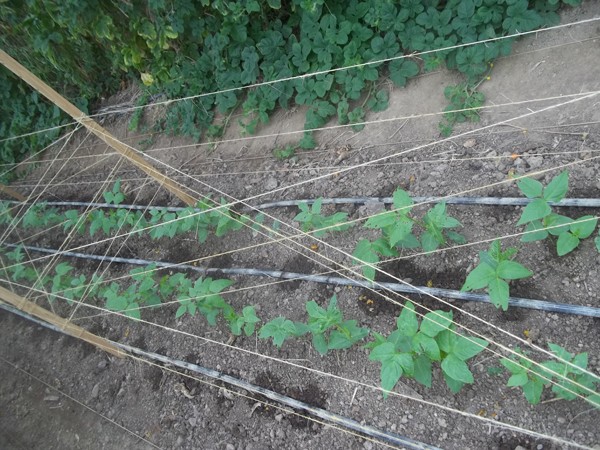
Edamame (varieties of soybean for fresh eating) do really well in our hoophouse. Growing them under cover protects them from deer, and yields beautiful pods. This is particularly valuable for edamame, as the diners see the cooked pods. Edamame has the advantage of being a crop that is picked all at once – we do not want a crop that requires daily harvesting in summer in our hoophouse. We like the variety Envy, a short, fast-maturing bush type. For seed crops, we sow June 2-July 23, allowing 100-110 days to mature seed. We can follow a June 22 sowing with other crops September 23; a July 13 sowing with other crops October 23; and end with July 27 edamame harvested October 12 for fresh eating, or November 9 for seed.
We have also grown soup beans in the hoophouse, sown July 13 and harvested in mid-October for seed. We don’t like putting up big trellises, so we now choose bush or upright varieties. Short varieties also allow more sunlight to reach the north side of the house. Be aware that some beans cross. Asparagus beans and cowpeas (southern peas) all cross, as do bush and pole beans. Fava beans, runner beans and lima beans are all separate types.
Collard seed and greens
Clifton Slade in Surry County, Virginia told me about his overwintered collard greens that provided a fine crop of seed the next spring. Clif’s winter-hardiness zone is 7b (average annual minimum temperature between 5°F to 10°F, -15°C to -12° C). He has a research project at Virginia State University to show growers how to earn $1/square foot ($43560 per acre) from carefully chosen vegetable crops.
He grew a whole 24’ x 96’ high tunnel of collard seed. His tunnel has four beds, aisles of 18” between beds, and he sowed four rows at one foot apart per bed. Initially Clif used overhead sprinkler irrigation, but he says he would recommend drip tape (which he switched to later, when the plants got to be above head-height). He now has two lines of tape per bed.
He prepared the beds by his “5-gallon bucket technology”: one 5-gallon bucket of pelletized chicken manure and ten 5-gallon buckets of compost per bed. He used no additional fertilizer while the crop was growing as he did not want to encourage too much leafy growth.
Clif direct seeded Champion collards on December 1 with an Earthway seeder, using about 1 oz of seed per 4 x 96 ft bed. He did not thin the plants at all – they were very close. On February 15 he started rolling up the side curtains every day, to vernalize the plants and ensure they produced seeds in a timely manner. Usually we are focused on preventing brassicas from bolting and seeding, but this was his goal.
90 days from sowing on March 1, he had a beautiful crop of greens. Although he had not intended to sell any greens from this crop, a neighboring CSA farmer was short of produce that month, and Clif harvested about 1000 lbs of outer leaves to sell to his neighbor at $1 per pound. Clif reports that the leaves were a little pale from growing so close, but were otherwise in fine shape. He reckons he could have harvested more leaves after another week, but he did not (he was focusing on the seed crop, after all).
On March 10, the plants started flowering, and the seed was mature in April, much earlier than field-grown seed, which Clif had grown in previous years. The pods were double the size of ones grown outdoors, and the weight of the pods harvested was also double. The seeds were bigger than outdoor-grown collard seed, and had a good germination rate. (Large seed is generally an advantage in terms of seed vigor and sturdy plant growth.)
Clif harvested the tops of the plants into one-gallon plastic tote bins using pruners. He had about 100 lbs of pods, which gave 30 lbs of cleaned seed, much more than his seed contract called for. His family and friends broke open the pods by hand while visiting, and Clif screened and winnowed the seed for sale to SESE. See the Spring 2017 issue of Heirloom Gardener for an article by Ira Wallace about the Heirloom Collard Project.
Okra pods and seed
After pulling the collard seed crop, Clif was able to transplant an okra crop at 3 ft (1 m) spacing in the row, one row per bed (4 rows of 30 plants). He took advantage of the early maturity to be the first grower bringing okra to market. Once all the other market growers were bringing field-grown okra, he stopped harvesting, and left the plants alone to develop seed. Each plant produced up to 1 lb of seed, which he could sell at $25-$30 per pound. And he avoided having to work in the tunnel during the hottest weather.
Sweet potato slips
For several years, Clif has used a hoophouse to grow sweet potato slips for sale through SESE. He also grows some using low tunnels outside. He beds the sweet potato tubers starting March 1. The first week (which is chancy with the temperatures), he plants only 50 bushels (each 50 lbs). He beds 100 bushels the second week, then 300 bushels per week after that. He cautions against starting too many too early in the year or you will have sleepless nights of worry. He covers the tubers with 2 in (5 cm) of soil and puts a layer of clear plastic immediately on top of the soil. He reckons that each layer of plastic keeps the soil 8 Fahrenheit degrees (5 Celsius degrees) warmer at night than outdoor air temperature, and the 2 in of soil (warmed by the sun in the daytime), also contributes. With sweet potatoes it’s important to keep the soil temperature above 50°F (10°C) to prevent damage. He starts pulling slips for sale May 1, selling those first ones to growers further south.
Crop sequences
The collards/okra rotation occupied Clif’s high tunnel from December 1 to late summer. Another possibility is onion starts/sweet potato slips/okra, occupying the space from Nov 14 to late summer the next year. These are both nice rotations in terms of using different crop families, and leave the late summer-to-fall available for salad crops or quick-growing cooking greens (ideally not growing other brassicas before collards).
Onion starts
Building on his success with sweet potato slips, in winter Clif is growing onion starts in his hoophouse, for sale as plants locally in early spring. He direct seeded November 14 and November 21 in in the hoophouse and under a low tunnel outside. Onion roots are tough and thick- they make easy bare-root transplants.
We’re in zone 7, at 38°N, a little bit colder than at Clif’s farm. We sow onions in the ground in the hoophouse November 10, November 22 and (if needed, as a back-up) December 5. Sow about 12 weeks before you are likely to get suitable transplanting weather. Onions are small seedlings and a lot will grow in a small area. We divide the number of plants wanted by 20 to give the minimum row feet to sow, and we sow this amount twice, not counting the back-up sowing. We sow rows 3” apart, 12 rows in a 4’ bed with some extra space at the edges. They get watered along with everything else when we run the drip irrigation. The onions get to thin-pencil-size by March 1, which is about as early as we can plant. If we find we have extra transplants in March, we harvest them as scallions!
Spinach and brassica starts
In late January we sow spinach, kale and collards in the hoophouse for transplanting outdoors in early March. Bare root transplants are labor-saving compared to using flats, and our comparison trials with spinach in Speedling plug flats showed results were just as good. We have tried early lettuce transplanted from the hoophouse, but the plants were not as sturdy as those in flats, so I won’t recommend that.
Our usual formula for sowing seedlings in the hoophouse is to divide the number of plants wanted by 10 to give the minimum length of row to sow, in feet. These will be planted out in the field in early March. Dig up a clump of plants and give it a light shake, to leave the majority of your soil behind, and a little on the roots. This means less damage to the root hairs. Be sure to dig deep enough so you don’t damage the tap roots. I recommend watering your plants the day before and an hour before digging them. Keep them cool until replanted.
Pam Dawling grows vegetables at Twin Oaks Community in central Virginia. Her book, Sustainable Market Farming is widely available, including by mail from Sustainable Market Farming, 138 Twin Oaks Road, Louisa, Virginia, 23093. Enclose a check (payable to Twin Oaks) for $40.45 including shipping. Pam’s blog is on her website www.sustainablemarketfarming.com, and on facebook.com/SustainableMarketFarming.

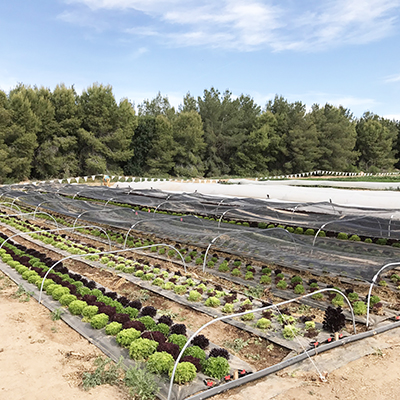
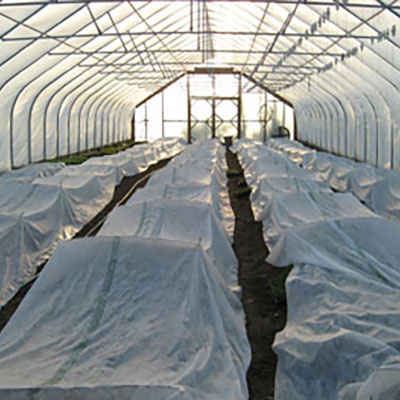
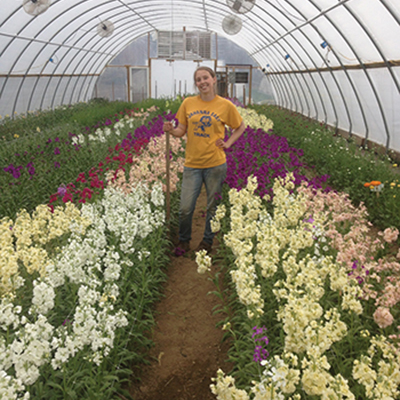
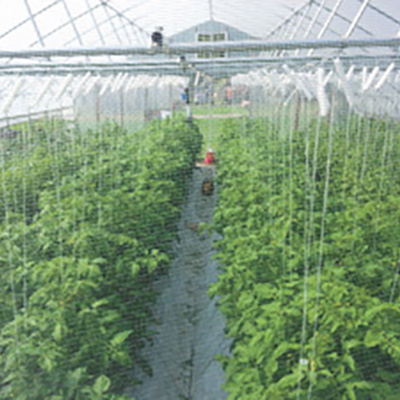

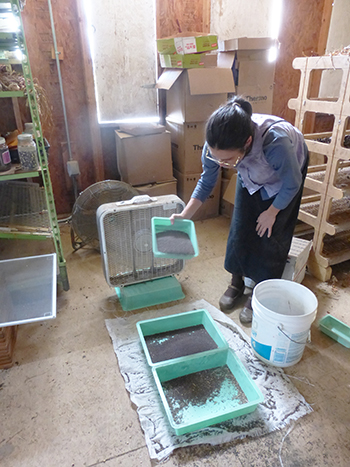 Last month I wrote about
Last month I wrote about 
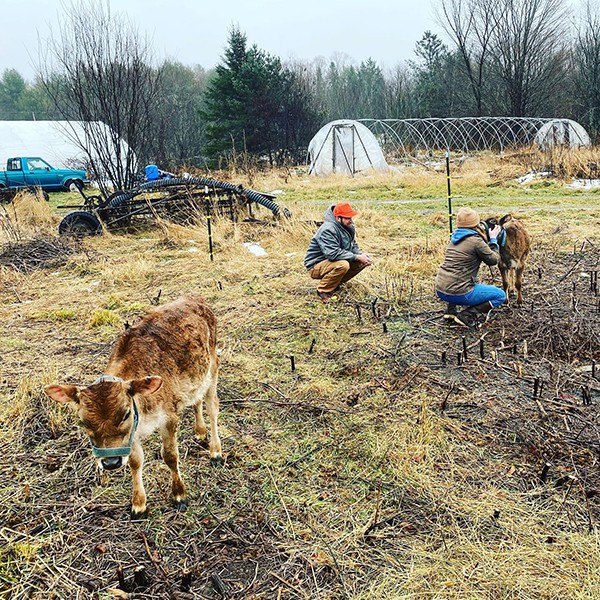 Why two of our hoophouses are named because of Emily
Why two of our hoophouses are named because of Emily
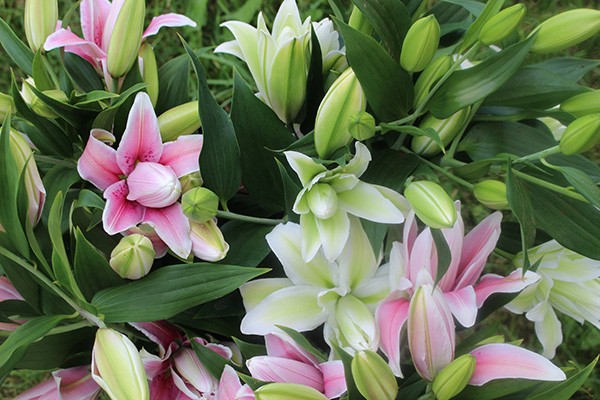 As soon as we start driving our routes in the spring our customers ask us when we’ll have roselilies. They’re that popular and have become a signature crop for us. They’re basically a type of oriental lily, but with multiple layers of petals, and without stamens and pistils (i.e. no pollen!).
As soon as we start driving our routes in the spring our customers ask us when we’ll have roselilies. They’re that popular and have become a signature crop for us. They’re basically a type of oriental lily, but with multiple layers of petals, and without stamens and pistils (i.e. no pollen!). 
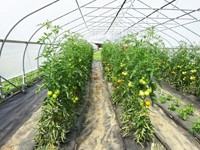

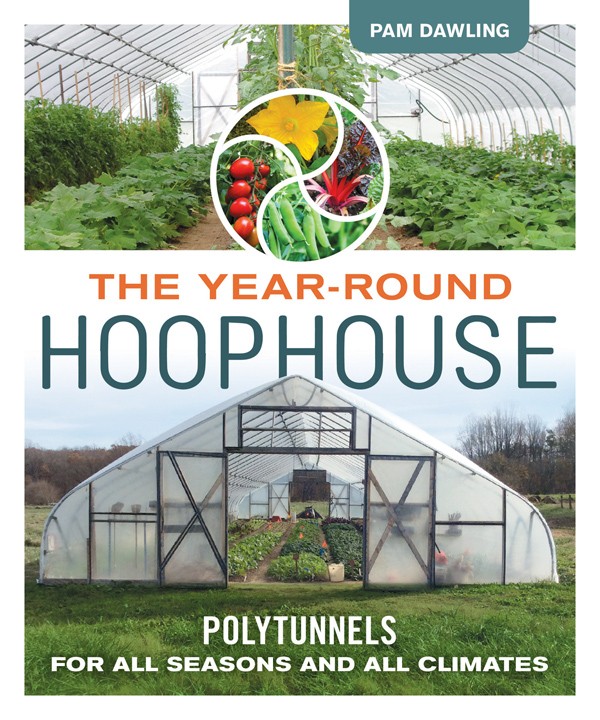 In the hoophouse plants grow bigger and faster. We want to avoid anything that slows growth down. All that growing burns up the organic matter and nutrients in the soil at a fast rate, particularly in hot, humid climates. We need to replenish the soil more generously and more often than we do outdoors. Good soil health means having enough plant nutrients, not surplus. If you have too much soluble nitrogen (N), it can leach into the groundwater or burn up the organic matter. Using manure or compost for a nitrogen source can cause the build-up of excess phosphorus (P).
In the hoophouse plants grow bigger and faster. We want to avoid anything that slows growth down. All that growing burns up the organic matter and nutrients in the soil at a fast rate, particularly in hot, humid climates. We need to replenish the soil more generously and more often than we do outdoors. Good soil health means having enough plant nutrients, not surplus. If you have too much soluble nitrogen (N), it can leach into the groundwater or burn up the organic matter. Using manure or compost for a nitrogen source can cause the build-up of excess phosphorus (P).
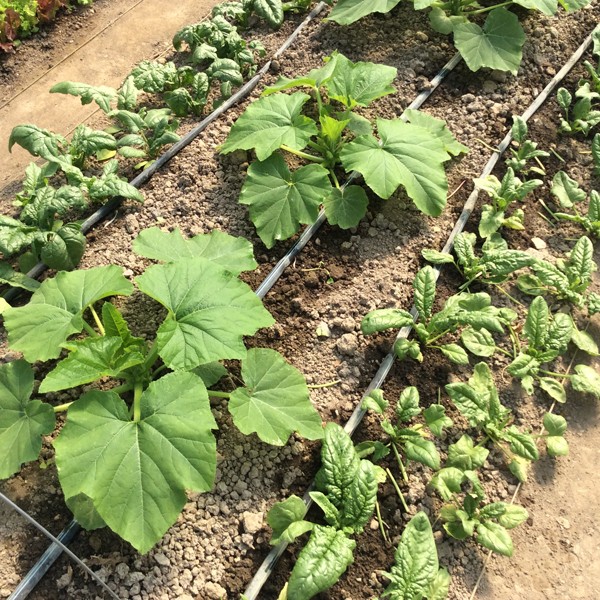 We have three main seasons in our zone 7 central Virginia hoophouse: fall-winter (October to March), spring-early summer (March to July) and high summer (August and September). We grow one bed (90’/27.5 m or so) each of yellow squash and bush cucumbers in the spring-summer season, for reliable early harvests and to help with crop rotation. If you farm in a colder climate than ours, you might be questioning allocating the precious real estate to a crop that so quickly goes from desirable to over-abundant, especially when there are more profitable things to give the space to. One reason is a difference between southern and northern climates.
We have three main seasons in our zone 7 central Virginia hoophouse: fall-winter (October to March), spring-early summer (March to July) and high summer (August and September). We grow one bed (90’/27.5 m or so) each of yellow squash and bush cucumbers in the spring-summer season, for reliable early harvests and to help with crop rotation. If you farm in a colder climate than ours, you might be questioning allocating the precious real estate to a crop that so quickly goes from desirable to over-abundant, especially when there are more profitable things to give the space to. One reason is a difference between southern and northern climates.
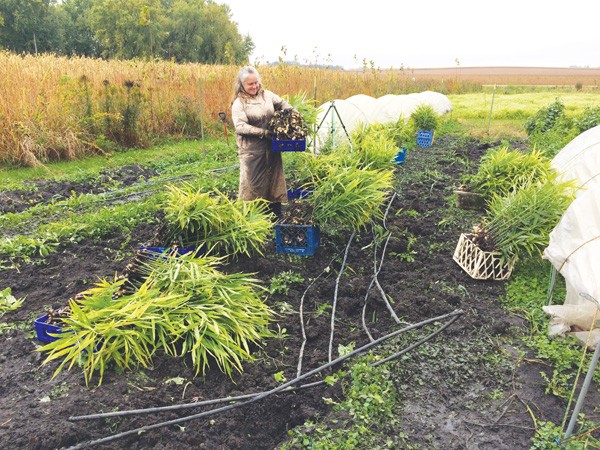 Local and organic ginger is a high-value crop that in the right market can be in high demand. Growing this tropical crop in the Midwest can be a challenge, and thus far, farmers thought they had to own a high tunnel to ensure adequate heat during the variable spring and fall seasons. High tunnel space on most farms is at a premium, so it is expensive space to devote to a long-season crop.
Local and organic ginger is a high-value crop that in the right market can be in high demand. Growing this tropical crop in the Midwest can be a challenge, and thus far, farmers thought they had to own a high tunnel to ensure adequate heat during the variable spring and fall seasons. High tunnel space on most farms is at a premium, so it is expensive space to devote to a long-season crop. 
 With protected space on the farm at a premium, we have to choose wisely when deciding which crops are worth putting under cover. We start out by deciding what to grow overall, and then deciding how much of that can fit inside structures, by doing a little revenue and profit analysis. Quickbooks is used to record sales, so it’s easy to list sales per item at the end of the year to see what brought in the most revenue. A version of that report extracted to a spreadsheet calculates profit per square foot by first subtracting the costs of plugs or bulbs, and then dividing by the cultivated area for each item.
With protected space on the farm at a premium, we have to choose wisely when deciding which crops are worth putting under cover. We start out by deciding what to grow overall, and then deciding how much of that can fit inside structures, by doing a little revenue and profit analysis. Quickbooks is used to record sales, so it’s easy to list sales per item at the end of the year to see what brought in the most revenue. A version of that report extracted to a spreadsheet calculates profit per square foot by first subtracting the costs of plugs or bulbs, and then dividing by the cultivated area for each item. 
 Prairie Garden Farm has been growing cut flowers for florists and studio designers since 2010. As we’re on an exposed hillside in west-central Minnesota, we’re dependent on protected culture to grow quality flowers. This article describes our approach – planning, financial, and operational details - that helps us make the most of our structures.
Prairie Garden Farm has been growing cut flowers for florists and studio designers since 2010. As we’re on an exposed hillside in west-central Minnesota, we’re dependent on protected culture to grow quality flowers. This article describes our approach – planning, financial, and operational details - that helps us make the most of our structures.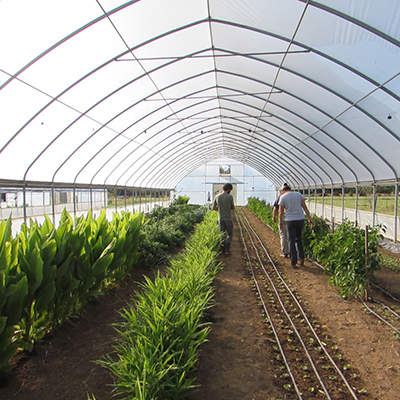
 For years, my wife and I have been considering offering a winter CSA, but have been hesitant. This hesitation stemmed mostly from not having any real experience growing over winter (beyond the kale and collards that persist until January in our fields), but also from lacking the proper infrastructure. This year, however, with two small tunnels up and some decent storage facilities, we decided to make the leap. But I first wanted to talk to a few winter growers to see how they run their winter CSAs to get some pointers on what to expect, what to plan for, and how to manage everything from the hoophouse to the wash/pack. Here is what I learned.
For years, my wife and I have been considering offering a winter CSA, but have been hesitant. This hesitation stemmed mostly from not having any real experience growing over winter (beyond the kale and collards that persist until January in our fields), but also from lacking the proper infrastructure. This year, however, with two small tunnels up and some decent storage facilities, we decided to make the leap. But I first wanted to talk to a few winter growers to see how they run their winter CSAs to get some pointers on what to expect, what to plan for, and how to manage everything from the hoophouse to the wash/pack. Here is what I learned.
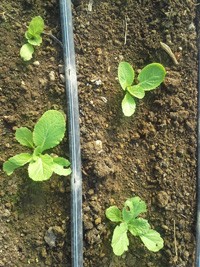 When we talk about high salt levels in soils we do not mean simply sodium chloride, as we would if we complained of too much salt in our soup. “Salts” in the agricultural sense means all soluble ions or nutrients - nitrate, ammonium, potassium, calcium, magnesium, chloride and sulfate. Remember that these are essential nutrients – they are our friends. As with much in agriculture, soluble salt concentration is a matter of balance.
When we talk about high salt levels in soils we do not mean simply sodium chloride, as we would if we complained of too much salt in our soup. “Salts” in the agricultural sense means all soluble ions or nutrients - nitrate, ammonium, potassium, calcium, magnesium, chloride and sulfate. Remember that these are essential nutrients – they are our friends. As with much in agriculture, soluble salt concentration is a matter of balance.